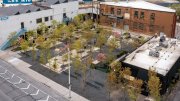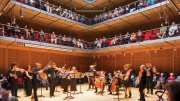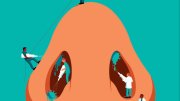Harvard’s anomalous academic calendar will more closely resemble those of other institutions—starting just after Labor Day and ending with Commencement in late May—beginning in the 2009-2010 school year. The new order was unveiled on June 6, just before this year’s Commencement, when President Derek Bok announced that the University’s Governing Boards had just approved his recommendation. Bok solicited community opinion on the proposal in early May, and signaled in his annual report (see “Developing Deans, Calendar Consensus,” July-August, page 60, and associated articles) that such decisions were properly the central administration’s to make on the University’s behalf.
The calendar Bok sketched would:
- have each school begin the fall semester in early September, typically right after Labor Day;
- conclude the term, and examinations, in December;
- begin the second semester in some coordinated fashion, during a period from mid to late January;
- coordinate Thanksgiving and spring breaks; and
- bring the year to a close at Commencement by the end of May.
Schools such as the Faculty of Arts and Sciences (FAS), which has discussed a January “J” term for experimental learning experiences (perhaps one intensive, ungraded class), would be free to decide what use to make of the period after New Year’s and before the beginning of the second semester.
The rationale for adopting this scheme University-wide is principally academic. As matters stand now, with the professional schools’ and FAS’s schedules as much as a couple of weeks out of kilter, students are effectively precluded from cross-registering for classes elsewhere at Harvard, and faculty members who want to teach in a different school—say, to offer a College freshman seminar—face unneeded obstacles in doing so. The earlier end to the academic year would make it easier for undergraduates to find summer jobs, internships, and opportunities for study or service abroad. And undergraduates overwhelmingly expressed their preference for exams before the winter holiday, giving them time to relax without the pressure of then gearing up for tests after New Year’s (and after an extended reading period that could result in some finals falling as much as five weeks after a last class meeting).
The recommendations adopted, and the rationale supporting them, had been largely spelled out in 2004 by a committee chaired by Pforzheimer University Professor Sidney Verba. Implementation was postponed during the comprehensive review of the undergraduate curriculum then being pursued by FAS. With the new curriculum now fully legislated (although not yet implemented), and with the academic and other advantages available from a coordinated calendar outweighing objections to the change, Bok proceeded. Two years hence, freshmen will report to Cambridge by late August, and Commencement will lure parents and reunion-bound alumni back to campus the following May—when the local flowering shrubs are still putting on a show that has typically faded by the time of the June festivities.





